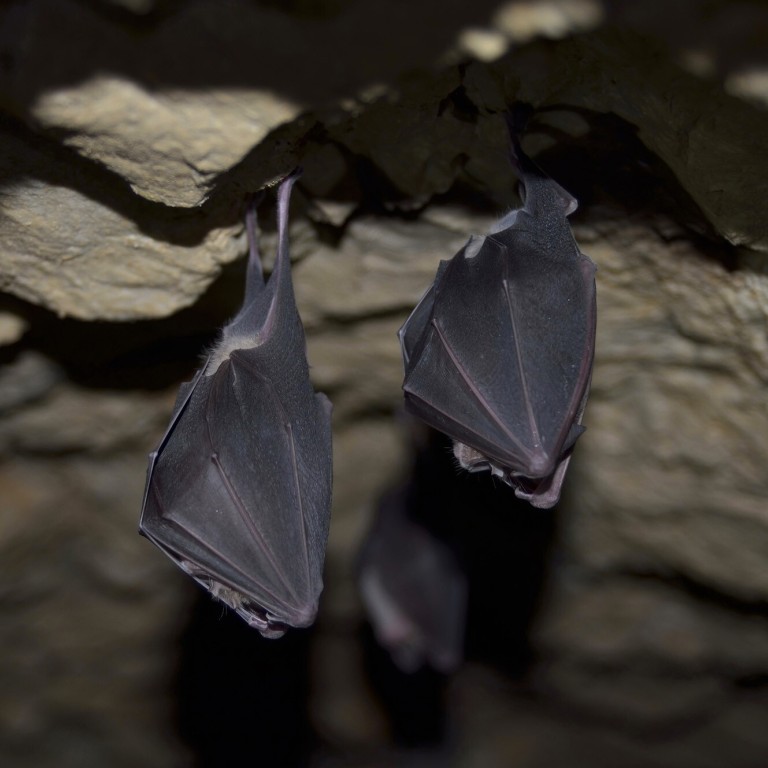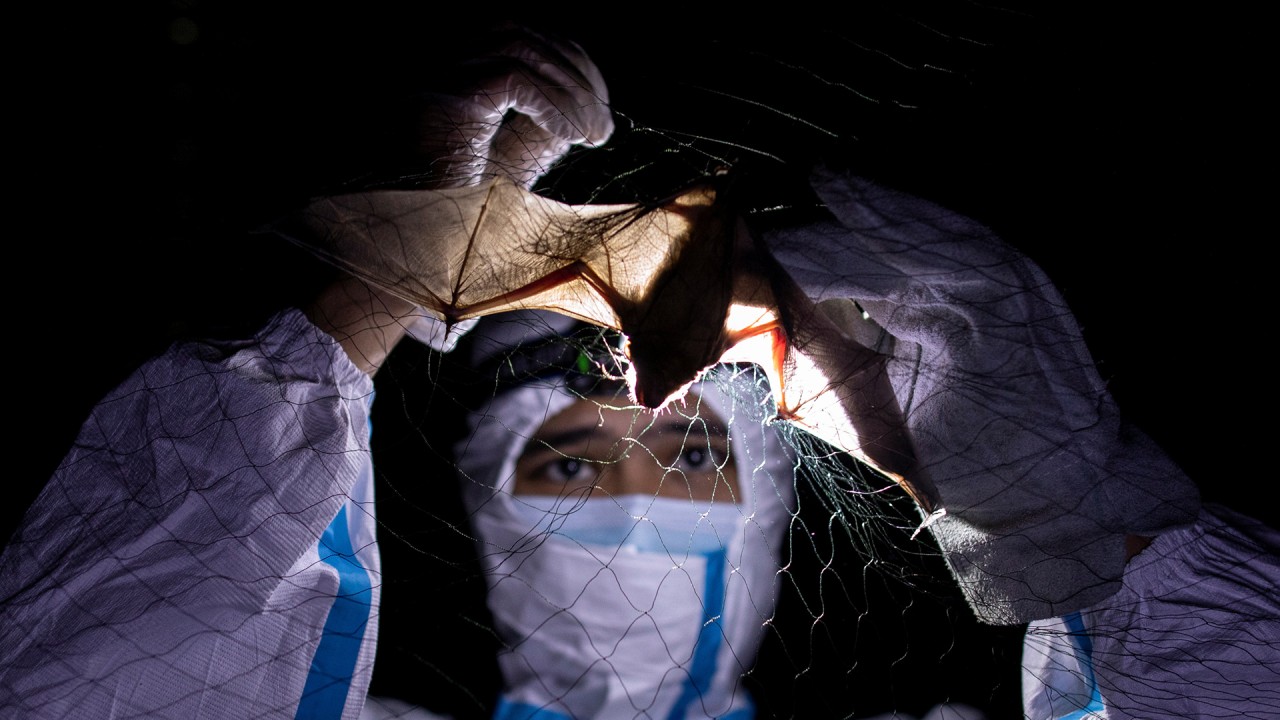
Bat viruses found in Laos ‘closest known ancestors’ to pandemic strain
- Researchers say three coronaviruses identified in horseshoe bats in the north of the country share key similarity with Sars-CoV-2
- Critical area is the genetic structure of the receptor binding domain, which enables the virus to latch onto and infect cells
The scientists from Institut Pasteur and the National University of Laos collected samples in the Southeast Asian nation over six months from July last year.
They say three coronaviruses found in horseshoe bats living in limestone caves in the north of the country are the most similar identified so far to Sars-CoV-2 in a critical part of its genome – the region which enables it to latch onto and infect cells.
Known as the receptor binding domain, its genetic structure has been at the centre of questions within the scientific community because it differs from the bat virus considered to be the closest known ancestor of Sars-CoV-2.
But the latest findings identify new ancestors that may have lent Sars-CoV-2 this particular attribute.
When taking into account the similarities across the receptor binding domain, the new viruses – known as BANAL-52, BANAL-103 and BANAL-236 – are “the closest ancestors of Sars-CoV-2 known to date”, the researchers said in a paper uploaded to the Research Square preprint server on Friday ahead of peer review.
“These viruses may have contributed to Sars-CoV-2’s origin and may intrinsically pose a future risk of direct transmission to humans,” they said.

05:08
Nature or lab leak? Why tracing the origin of Covid-19 matters
The findings come amid growing attention on the hunt for the origin of Covid-19. Intense scientific and political debate has focused on whether the virus – thought to originate in a bat – spilled into humans naturally or was the result of a research or laboratory-related incident.
While the latest study does not resolve that question, the findings provide significant pushback against a theory that Sars-CoV-2 could have been genetically engineered, outside researchers say.
Evolutionary biologist Edward Holmes of the University of Sydney called it a “hugely important study” that strongly supports a natural origin of Sars-CoV-2 from animals.
The close similarity between the receptor binding domains on the bat viruses found in Laos and on Sars-CoV-2 “totally rules out” this part of the virus being engineered or specifically adapted to people in lab work, Holmes said.
“It again shows how commonplace these Sars-CoV-2-like viruses are in nature. They seem to be part of the natural ecology of Southeast Asia and southern China,” he said.
Bat-human virus spillovers may be very common, study finds
The receptor binding domain has been at the centre of the controversy over whether Sars-CoV-2 is natural or genetically engineered, with some scientists suggesting this region of the virus is specifically well-adapted to humans and thus not natural.
Although the three viruses found in Laos were missing another notable feature that helps Sars-CoV-2 infect cells, the team said at the receptor binding domain they could bind to and enter human cells in a similar way to the pandemic virus.
“Our results therefore support the hypothesis that Sars-CoV-2 could originally result from a recombination of sequences pre-existing in [horseshoe] bats living in the extensive limestone cave systems of Southeast Asia and south China,” they said.

03:44
‘Virus hunters’ in the Philippines study bats to prevent future pandemics
The scientists did not give an assessment of whether the new viruses were the closest to Sars-CoV-2 on average across the whole genome. Instead, they said “the evolution history of Sars-CoV-2 is more complex than expected”, with bat virus strains close to those found in China, Laos and potentially elsewhere in the region likely to have contributed to different parts of the Sars-Cov-2 “mosaic” genome since bats swap viruses and share habitats.
In Laos, the team used specialised nets to trap more than 600 bats as they flew into the forests from the limestone caves where they live. The biological samples collected from them revealed Sars-related coronaviruses in three species of horseshoe bat in Fueng district, Vientiane province.
Unlikely clues to Covid-19 virus family found in Cambodia lab freezer, Thai drain pipe
While Southeast Asia and southern China have long been considered hotspots for these viruses, the new findings could help inform scientists on where to look not just for bats but for other animals and people that may have been infected with Covid-19 or its direct ancestor virus prior to the first known outbreak.
Maria Van Kerkhove, the WHO’s technical lead on Covid-19, said on Twitter that the researchers had shared the findings with her and that “only through rigorous science, collaboration, sharing results & thorough study w/o politics will we better understand #SARSCoV2”.

